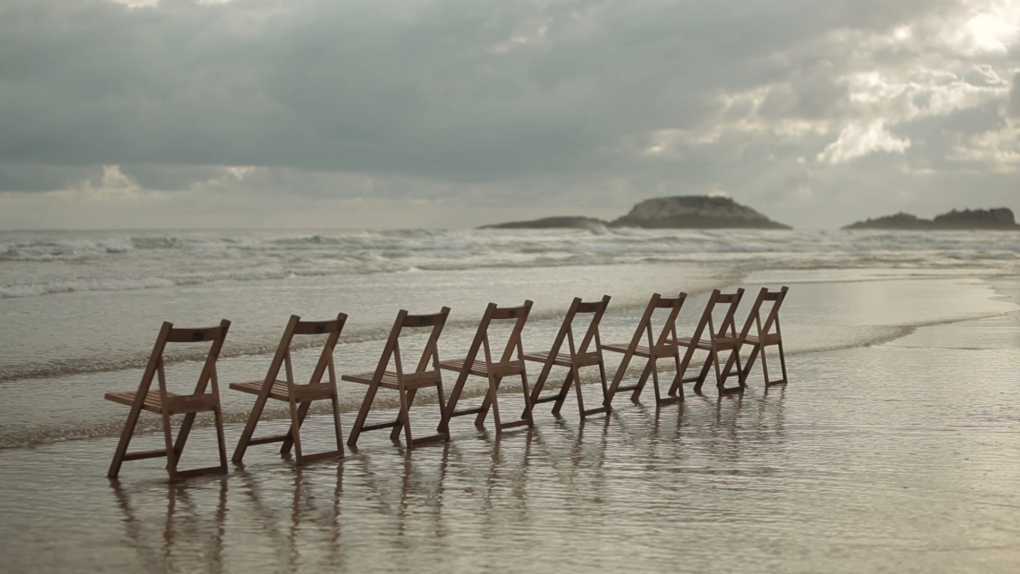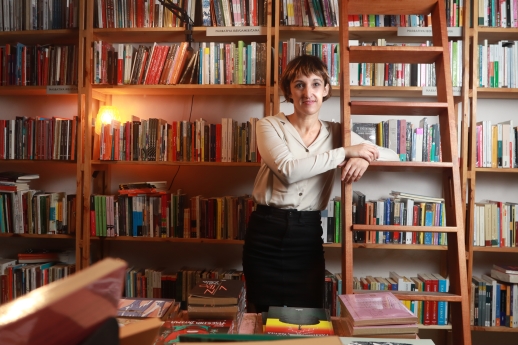The positive response to the most recent bersolarismo final, which filled the Navarra Arena, in Pamplona, with 13,500 spectators, prompts us to analyse the rise of this cultural manifestation.
What is a bertsolari? The success of Basque improvisers who fill concert halls
Last updated on 29 Dec 2023It is easy to explain what a bertsolari is and how he or she performs. But scrutinising the factors behind the success and passions surrounding this Basque cultural expression is more complicated. John Foyle, scholar of manifestations of orality, saw it as a unique phenomenon, not so much because of the type of oral improvisation, which has its global counterparts, but because of its sociocultural significance in the Basque context. In this article, originally published in the newspaper La Vanguardia, journalist Ander Goyoaga examines the rise and future of this creative discipline after the last bersolaritza final in December 2022.
On 13 December, around 13,500 people packed the Navarra Arena pavilion in Pamplona for eight hours, coinciding partly with the Argentina-France match in Qatar, to watch the final competition in which the winner of the most important four-year bersolaritza championship would be decided. The tickets sold out several months ago in a matter of hours. Indeed, a much larger venue could probably have been filled, even though the entire event was broadcast on the Basque public television station, ETB.
The great virtue of bertsolaritza has been its capacity to adapt to each historical period, attracting new generations and resonating strongly in society.
Maialen Lujanbio (Hernani, 1976) was proclaimed champion for the third time, in a close battle with Amets Arzallus (Saint-Jean de Luz, 1983) and ahead of the other six finalists, aged 22 to 47, who qualified in the previous heats. At the end of the day, however, the feeling was that it was the discipline of bertsolaritza itself that had come out on top. The success also gave rise to curiosity about this phenomenon: how is it possible that a traditional, cultural, poetic art form of this nature is not only on the decline in these fast-paced modern times, but is booming?
What is a bertsolari?
Jon Abril is currently the president of the Elhuyar Foundation, dedicated to promoting science, technology and the Basque language. He has also been a bertsolari, a judge in bertsolaritza competitions and the person who decides on the topics to be put forward. Despite his closeness to this discipline, he sees a "complex" dimension in terms of analysing its implementation.
"Bertsolaritza in itself can be defined as an improvised song that is performed by reciting verses that respond to a proposed theme. For it to exist, bertsolaritza requires two components: the bertsolari and the audience. In championships, there may also be a jury, or those responsible for proposing topics and injecting energy into the sessions. In any case, it seems to me that there is a more complex dimension to explaining the phenomenon. It has to do with Basque culture, identity and tradition. It is a form of expression with a long-standing tradition which, nevertheless, has evolved, adapted and been passed down in different ways at different times," explains Abril.

From bars to pavilions
Abril explains that this evolution has led to the fact that today bertsolaritza has taken hold in the form of a show. "In the past, however, other forms were very important: written verses sessions in bars and at popular gatherings, and family transmission. While many of these forms still exist, we see that bertsolaritza has gained ground in front of a large, sometimes massive, audience," he adds.
Jone Miren Hernández, lecturer in Anthropology at the University of the Basque Country (UPV/EHU), mentions John Foyle when she explains the peculiarity of the phenomenon: "There are similar expressions all over the world linked to centuries-old oral tradition, much like the case of Basque. The great virtue of bertsolaritza has been its capacity to adapt to each historical period and become more powerful, attracting new generations and resonating strongly in society. That is what Foyle marvelled at."
It has succeeded to unite such a diverse audience because there are many connecting elements and they vary depending on the person.
From a more anthropological perspective, she emphasises the "community aspect" of the phenomenon, also present in other cultural expressions related to orality, although she defines Basque bertsolaritza as a "kaleidoscopic discipline".
"The community elements are there and the ability to create community is indeed relevant. It also brings together many other elements that allow us to connect with the public, elements of a social and political nature, linked to identity or to a minority language such as Basque. But it also combines elements linked to music, aesthetics and art. It has succeeded to unite such a diverse audience, especially in recent years, because there are many connecting elements and they vary depending on the person," she says.
The rise
The anthropologist from Gipuzkoa emphasises that the community perspective of this discipline is not only appreciated by the public, but also by the bertsolaris themselves: "They are artists and we admire their creativity and talent. However, unlike in other places, they have managed to retain a feeling of community, even though each one has their own unique personality, sense of self, and creative style. Individuality and particular genius have not been prioritised. This has been, in my opinion, one of the keys to success in recent decades."
In any case, Jone Miren Hernández emphasises the capacity for adaptation and organisation when it comes to explaining the upsurge of the last two decades. "There has been a system in place responsible for organising everything and bringing order to this expansion. The bertso-eskolas, schools of bertsolaritza, have also been key, and, above all, there has been a great capacity for adaptation."
Jon Abril agrees on this point and points to the choice of topics as an example: "More and more social issues are being addressed, whether it be the problems of migrants, the most topical debates in feminism or, for instance, what we saw in the final, bertsolaris can be asked to put themselves in the role of a transgender person. This has served to connect with the younger generations, but without scaring off the elder generations."
Jon Abril also stresses that bertsolaritza has managed to go beyond the most intensely Basque-speaking areas, reaching the capital cities and becoming an urban phenomenon.
Jon Abril also stresses that bertsolaritza has managed to go beyond the most intensely Basque-speaking areas, reaching the capital cities through the new generations and "also becoming an urban phenomenon".
In the footsteps of Maialen Lujanbio
Another of the major changes this cultural expression has undergone has to do with the growing importance of women and the role that feminism has played in this expansion. In 1997, Maialen Lujanbio, the current champion, was the first woman to reach the Basque Country Championship finals. In 2009, she was also the first woman to be proclaimed champion, (a feat she would accomplish again in 2017 and in the current edition). This Sunday, however, three of the finalists were women.
"Historically, bertsolaritza is and has been a reflection of society. Insofar as it is an expression that has developed in the public arena, a space dominated by men, it was traditionally a male domain. This has changed, and this change has not happened by chance or overnight. It has required work and the involvement of certain people. As in everything else, there has been resistance, but the admission of women to the schools of bertsolaritza or having Maialen Lujanbio as a bertsolari reference has meant that, here too, it has shown the ability to adapt to change," says Jone Miren Hernández.

The future
Jon Abril acknowledges that it may be surprising that such a ‘simple’ cultural expression, in the sense that comes with no large artefacts or huge marketing campaigns, is still alive and kicking in today’s “globalised, hyper-modern, technology-driven world".
"Its future will be promising if it manages to excite and connect with society and especially with the younger generations, as it has done in recent years. That is the challenge. So far, it has always gotten it right, which takes constant reflection, transparency, and the ability to draw others in. It also requires research, being attentive to other creators or taking the risk of hybridising with other genres. The bertsolaritza schools are full, so I´m very optimistic," he concludes.






